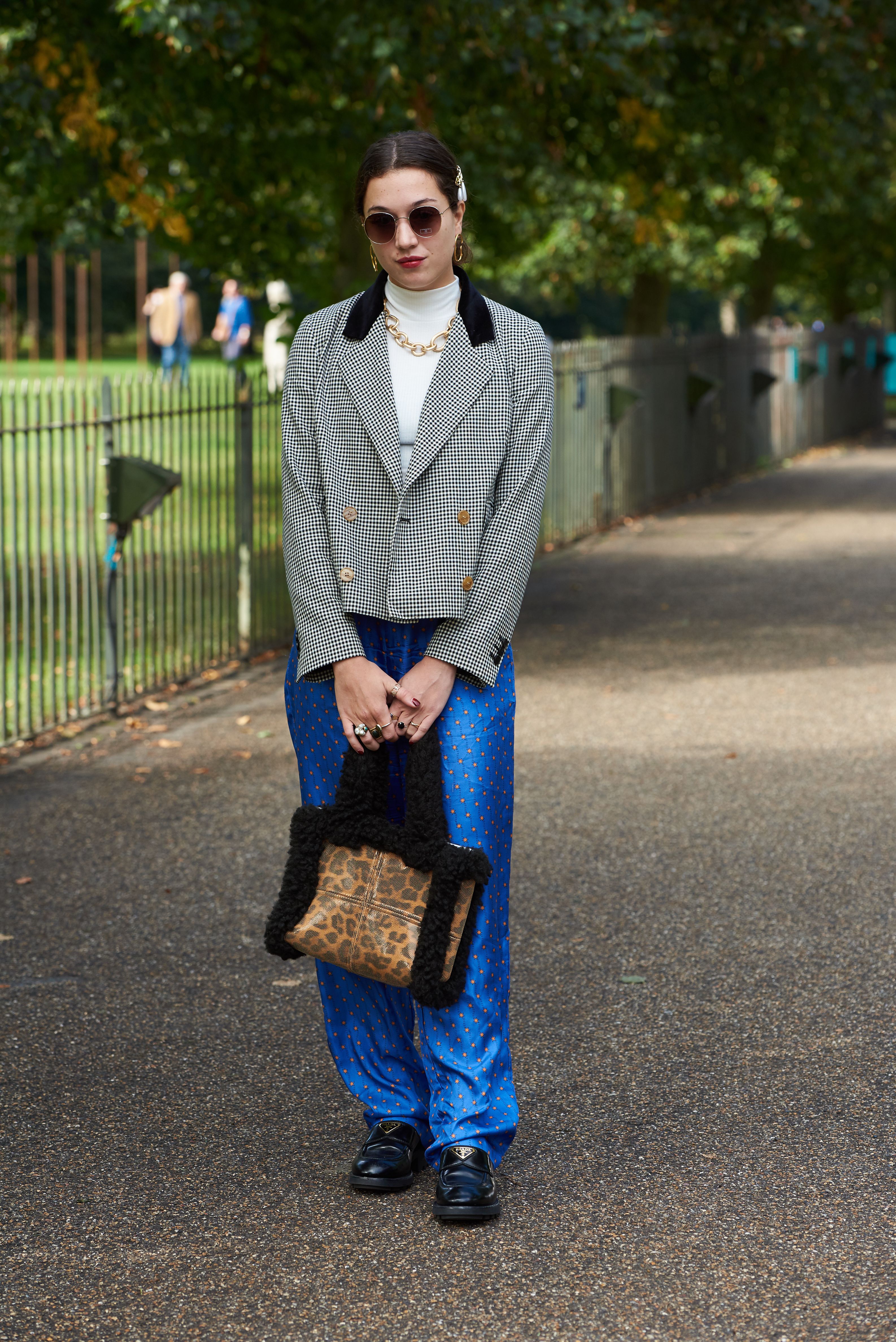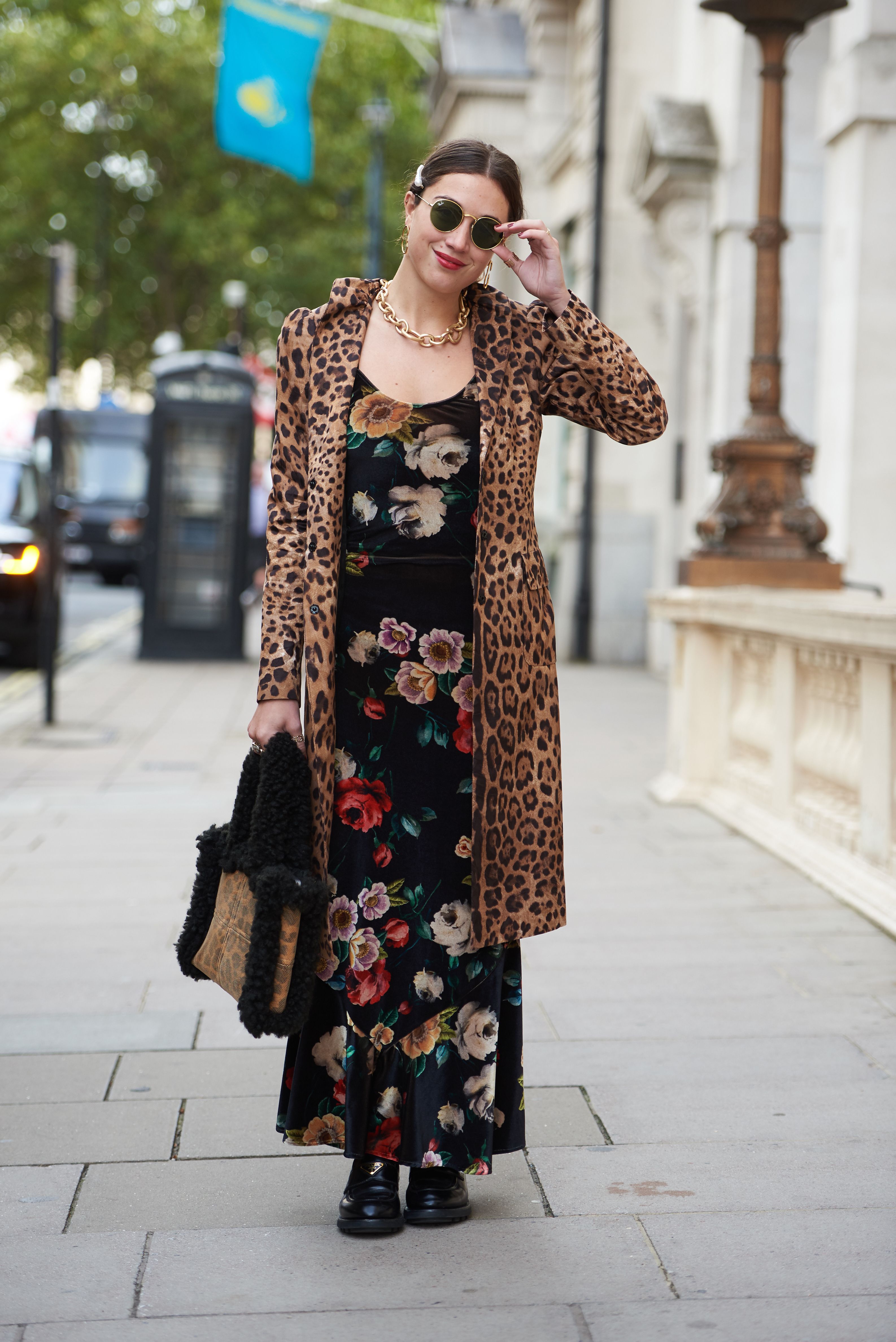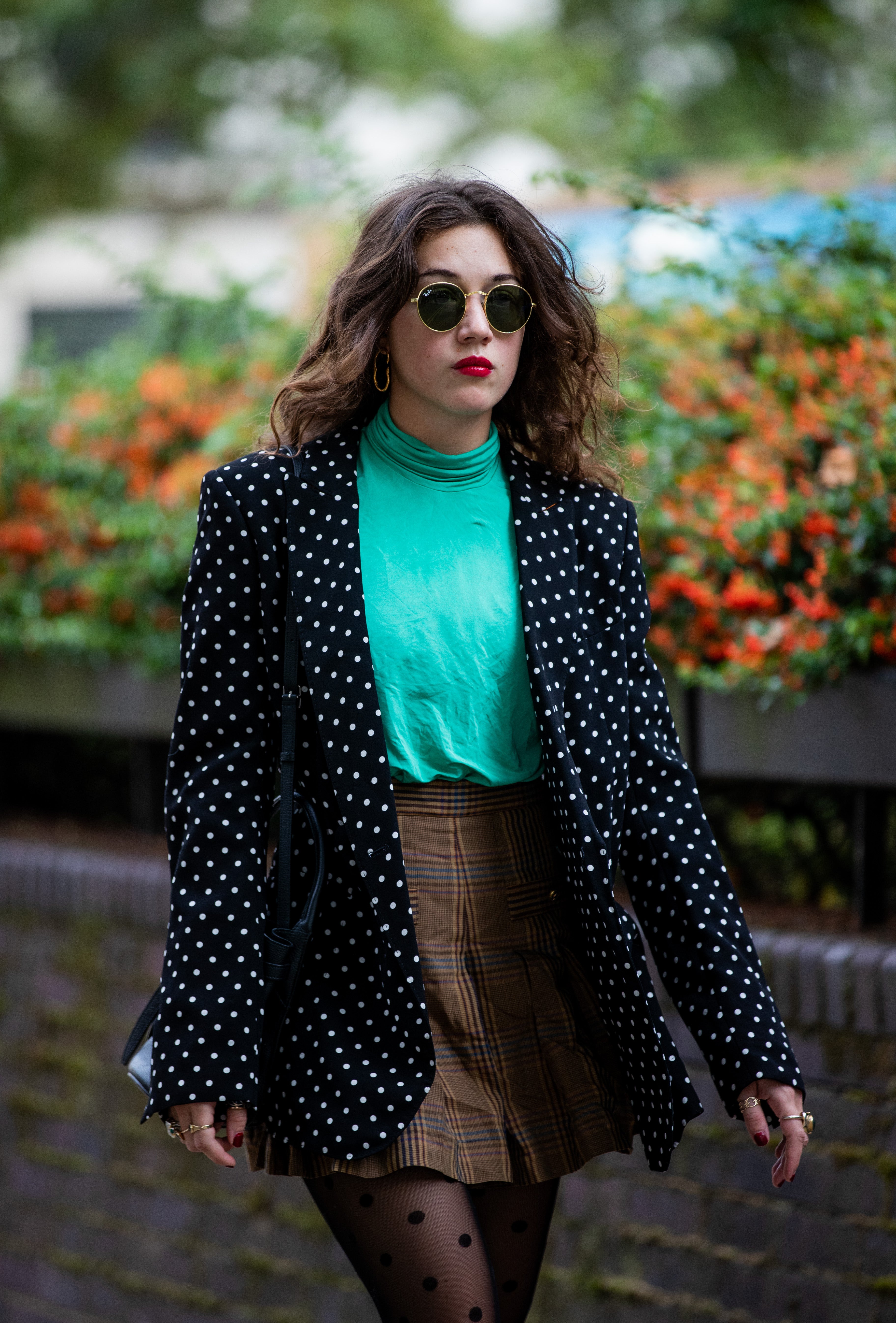The Independent's journalism is supported by our readers. When you purchase through links on our site, we may earn commission.
‘I rented my wardrobe for an entire month – here’s what happened’
As the rental fashion market continues to boom, Olivia Petter examines the highs and lows of borrowing your clothing


The stain is near the bottom and I swear it’s getting bigger every time I see it. “Don’t be ridiculous,” says my friend. I start to wonder if it was there before and panic when I can’t remember. It’s a dark and patchy stain, the kind that isn’t so obvious you can spot it right away, but look closely and it’s there, looking right at you with a judgemental stare that says: “Why would you wear a rented gown to a wedding?”, “What did you expect?” and “You probably shouldn’t have had that last G&T.”
These are just some of the thoughts that ran through my mind when I decided to try renting my clothes for a month. The idea was simple: for every party, event, or social occasion I had over a period of four weeks, I’d wear at least one item of rented clothing. It was going so well until I realised that the £700 dress I’d managed to snag for a week for £150 wasn’t quite robust enough to survive a boozy night out celebrating the marriage of one of my closest friends. Isn’t that the kind of occasion we’re supposed to be renting clothes for? Perhaps not, if it’s only going to highlight the fable that more expensive always means higher quality.
Slip-ups aside, there’s no doubt that fashion rental companies are having a moment. In the last year alone, the market has boomed (Hurr reported a 850 per cent year-on-year increase in registered users in May this year), with a surge of media coverage fuelled by famous faces, like Carrie Symonds, Holly Willoughby, and Laura Whitmore, proudly wearing their rented items at high-profile events. According to GlobalData, the rental industry is going to be worth £2.3bn by 2029.

Besides being able to wear something designer for a smidgen of the price, the real pull of rental fashion, and the one you’ll often hear about, is its low carbon footprint, is its low carbon footprint. At least, that’s the industry’s apparent USP. The idea is that by renting clothes as opposed to buying them, you’re reducing your overall consumption and therefore contributing less to fashion’s notoriously wasteful economy that sees roughly 336,000 tonnes of clothing ending up in landfil in the UK.
The way it works is quite straightforward, though it may vary depending on which platform you use. There are countless rental sites today, but the most popular ones are By Rotation, Endless Wardrobe, and Hurr, which is where I rented all my clothes from because I think they have the best selection of luxury items I’d never be able to afford. All of them work in similar ways: you simply browse the website, choose the items you want, check if they’re available for the dates you need them (on Hurr you can rent any item for either four, eight, 10, or 20 days), and then make your payment. You’ll then be put in touch with the owner of the item, who will send it to you at their discretion. Alternatively, if the item you’ve chosen is one of Hurr’s “managed” pieces, which are looked after by the platform on the lender’s behalf, it will be sent directly from their warehouse – and in the company’s own packaging. Everything is then professionally cleaned and includes free return shipping. If you rent directly from a lender, though, all that is left to them.
I tried both options and would say that the latter was definitely preferable. The item I borrowed directly from a lender arrived in an Uber, where it had been crumpled up into a plastic bag. Not exactly the courier service I’d expected when the gown in question was worth hundreds of pounds. Everything I ordered from Hurr’s managed stock, however, arrived folded, steamed, and in tip-top condition.
There’s plenty to choose from on the site, spanning tops, bottoms, dresses, and accessories, though there aren’t that many options when it comes to footwear – I suppose people are reluctant to quite literally walk in other people’s shoes, which makes sense when you consider, well, other people’s feet.

Still, regardless of your dress size, there are many options across the site, which is a bonus point for any rental service given that the sector has previously been criticized for only tailoring to sample-sized shoppers.
The only thing is, pretty much everything on offer is a statement piece. In other words, these aren’t really clothes you’d wear to a casual pub trip on the weekend with friends. That makes sense, though, when you consider the kinds of pieces people would want to rent out themselves i.e. expensive standout items that people feel are wasting away in their wardrobes after just a handful of wears.
Generally speaking, I tried to pick clothes I knew I’d get the most wear out of. This included an oversized polo top from Loewe (great with a plaid mini skirt I already owned), a pair of red corduroy trousers from Chloé (could pair with a T-shirt or an oversized shirt?), and a double-breasted shearling jacket from Staad Studio. I also went for a few event-specific items that I knew I could wear to upcoming occasions, like this floral velvet dress from Attico (wore it to a book launch), this black sequin jacket from L’Agence (awards ceremony), and a lace slip dress from Alexa Chung (dinner date). There were some miscellaneous items I just knew I’d adore, like this leopard print coat from Dolce & Gabbana, this Celine handbag, and this oversized polka dot blazer from Haider Ackermann.
I also ordered a few items that I’d never normally wear, like a peach tailored suit from Dundas, a pair of silky wide-leg trousers from Lisou, and a plaid bucket hat from Burberry. Almost everything I ordered retailed for more than £100.
All this sounds like a lot, and it was. But not everything I requested was available for the dates I wanted, which I suppose is inevitable when you have multiple people trying to rent the same items all the time. Think of it as the 2021 equivalent of fighting over one of your sister’s dresses in a brutal tug-of-war.

There were a lot of pros to my month of renting. The obvious one is that I had access to clothes I’d never be able to afford, and even if I only had them for a limited period of time, it still felt pretty luxurious to be swanning around in a £1,500 coat for a while. I was also able to wear the clothes I’d rented over London Fashion Week, which was a huge plus for me given how anxiety-inducing I always find putting outfits together for the shows. This time around, it was a piece of cake given how many lovely pieces I had, all of which were fairly easy to put together with items I already owned. And of course, the real goal: to reduce my usual September fashion footprint. For the first time in six years of going to shows, I also had actual street-style photographers asking to take my picture when I arrived – and almost all of them wanted to know where my clothes were from.
There were a lot of things I did end up wearing twice, too. Like the velvet Attico dress, which went down such a storm at the book launch that I wore it a week later to a dinner party. I also adored the lacy Alexa Chung slip, which I found could be styled in a number of ways, either on its own with heels or underneath a jumper with Doc Martens.
However, just how green rental fashion is has come under scrutiny in recent months. In July, a study published by the Finnish scientific journal Environmental Research Letters claimed that renting clothes is even worse for the planet than throwing them away. This was due to a number of hidden environmental costs, such as delivery (quite a substantial amount of transportation is required) and packaging. Additionally, frequent dry cleaning can rack up one’s carbon footprint quite significantly. The study also found that many rental companies misuse the term “circular economy”, which describes keeping resources in use as much as possible to gain the maximum use from them (say by passing them between people, for example), before recycling the raw materials and re-injecting them into circulation.

There are other issues, too. Like the aforementioned gown that I managed to stain. Given that anyone can sign up to rent their clothes out – and the renter can wear it to, well, any kind of event they want, there is always a risk that items could be stained or even ruined completely. This is a lose-lose situation for both the lender and person renting, who may feel limited when it comes to where they feel comfortable wearing a loaned item i.e. anywhere you’ll be drinking more than a few glasses of wine is not ideal.
There’s also the risk that the item you rent won’t fit you – Hurr actually has a policy in place for this that allows renters to return items within 24 hours and receive a full refund if the item they’ve chosen doesn’t fit. Mostly, though, I found it frustrating that I had to wave goodbye to clothes I really liked. It sounds simple enough, but in the weeks since giving up that Attico dress, my thirst to consume seemed to increase. I’ve spent hours online trawling for a carbon copy, which was rather the opposite of the effect I was trying to achieve.
All in all, I’m not convinced that renting is the most sustainable way to shop, at least, not in the sense that it’s superior to any other form of secondhand shopping. Nor would I recommend it to anyone who is planning on wearing their rented items to an event where they’ll be letting their hair down. That said, if you’re strategic about the pieces you choose, you know where you’ll wear them and what with, and you find that renting has stopped you from buying new items, it can be a joyful and fairly eco-friendly way of consuming clothes, so long as you don’t do it often. Just be wary that it might not necessarily be the dreamy guilt-free experience it’s made out to be.
Join our commenting forum
Join thought-provoking conversations, follow other Independent readers and see their replies
Comments